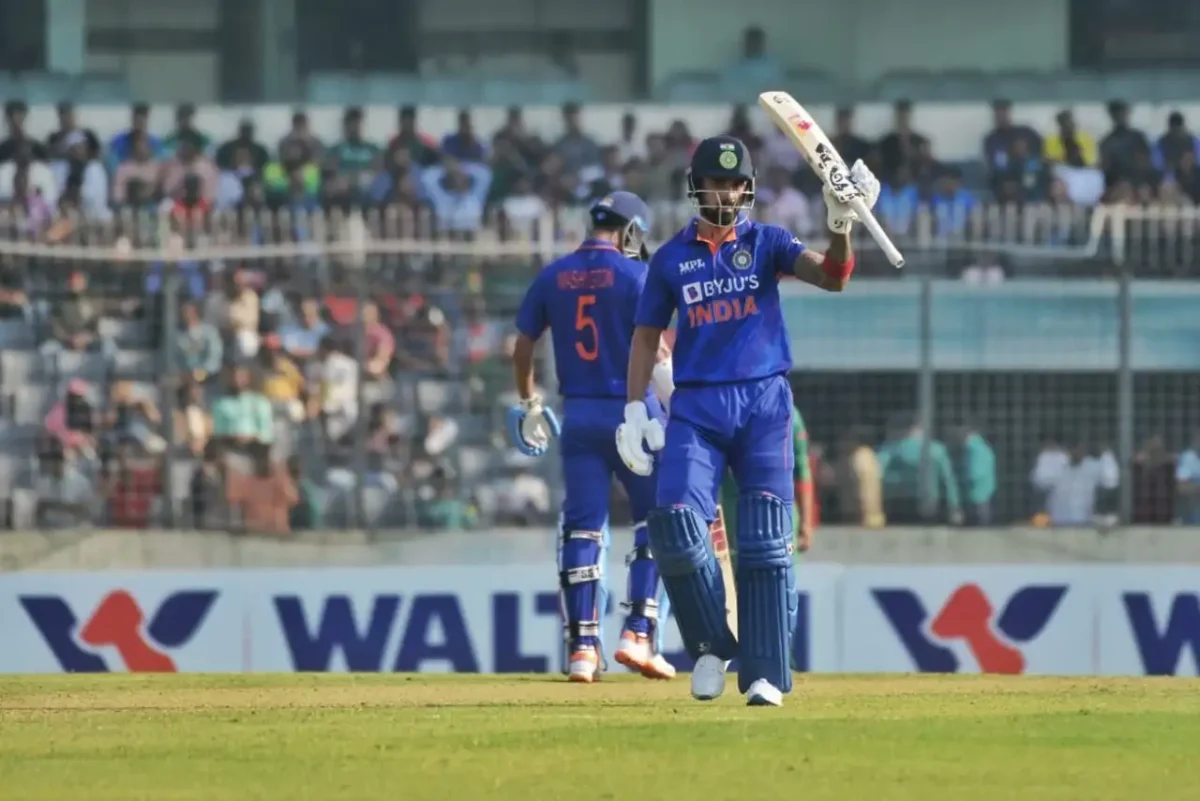
Often seeming lost at the top of the order, the elegant Indian batter has been a player transformed in the middle-order in 50-overs cricket. Can he follow suit in T20Is?

On a sharply turning pitch seldom seen in modern white-ball cricket, 524 legal deliveries were bowled by Bangladesh and India during the ODI series opener in Dhaka. A wicket fell less than 28 balls on average, with the dry track plaguing stroke-making, turning it into a strenuous task throughout the game.
Of the 22 players that batted in the middle, 13 managed to survive 15 or more balls for themselves, with only two of those operating at a strike-rate past 90.
KL Rahul went at a rate of 104.29 on the same pitch over 73 deliveries to play the innings of the day, worth 78 runs in a near-hopeless situation for his team.
Walking into bat with India reeling at 3 for 49 just after the first powerplay, Rahul produced a knock of great calmness, composure, measured strokeplay and above all, skill, while the rest of the batting fell stuck and collapsed like a pack of cards.
Not until India went into a frenzy with their bowling plans to Mehidy Hasan at the end did batting look easy at any stage bar the time KL Rahul made it seem comfortable without the wet ball refusing to grip and evading the sweet spot. It was a track designed for Shakib-Mehidy to cover for Bangladesh’s longstanding weaknesses, that came out exposed in flatter environments, and Rahul dominated them in the middle to provide India with a glimmer of hope.
The skill level on display aside, the role clarity and temperament on show were excellent, with Rahul batting in 86% control, as per ESPNcricinfo, comfortably higher than anyone else from either side. Clarity seems to inspire assurance within the Indian right-hander and holds critical weightage in a career that remains an enigma for most parts.
The batter has been around the set-up for best part of the last decade without truly exercising dominance across formats, something he is undoubtedly capable of. The only phase in his eight-year career that Rahul seems to be edging close to excellence is now when he has begun to operate at No.5 in India’s first-choice ODI outfit.
In what remains an extremely tough role to nail, as it commands robustness and depth of technique and resolve, and game awareness, Rahul has been tremendous for India. First asked to bat No.5 during the ODI series against Australia at the start of the pandemic era, Rahul is averaging 58.44 while retaining a strike rate of 112.39 at the spot. When batting either No.4 or No.5 for India, the right-hander has a career strike rate of 102.65 with an average of 52.50 across 17 innings.
The beast that the Indian fandom has continuously hoped to witness with Rahul in T20Is stands unleashed in the ODI game whenever the 30-year-old bats in the middle-order, unlocking a talent powerhouse that seems lost when operating at the top.
When possibilities are immense, Rahul goes within his shell, evidently not quite in sync with his game or unsure on how to clearly approach the task at hand. Ala T20Is. Give him a specific target to aim for, or a situation to propel his team through, and the same player feels unburdened and accentuates his skill to make a significant impact.
It’s an individualistic thing. But so is our sport, which brings together a unique set of individuals to form a team, compelling them to marry ideologies and approaches for a common goal. For Rahul, when his skill seamlessly weds role clarity, he is a player transformed, unlike the opener that goes missing under pressure.
When opening the innings, the same KL Rahul has a career first powerplay strike rate of only 67.56 over 23 innings in ODIs. The corresponding number for T20Is, a format where his game has really gone off the boil over the past 18 months or so, is a measly 128.92 despite starting amidst field restrictions.
Yet, India have repeatedly erred to try and make Rahul the opening batter work in white-ball cricket, wherein his overall ODI career strike-rate stands at 79.70. Since the start of 2021, Rahul – the T20I opener – has a pedestrian scoring rate of 113.24 over 19 innings against the top six oppositions while averaging 19. India have kept putting Rahul in the same scenarios at the top of the order, only to suffer the same fate in what makes for a baffling tactical mistake, one that held them back at the T20 World Cup in Australia.
Acknowledging what brings the best out of Rahul the overall limited-overs player could then be part of India’s imminent T20I transition, which will soon have multiple big-name absentees. One that could be well served in retaining him as the battle-hardened, defeated warrior in UAE and Australia, vying for resurgence and respect come the next World Cup in the Caribbean & USA, where his middle-order powerhitting skills on drier, turning pitches could be key.
Time will tell for the fate of Rahul the T20I cricketer and whether he comes to be the player Indian cricket have always identified in him. But his ascent into an ODI No.5, in a tougher format, reflects hope and can be a marker to be replicated when he bats in the shorter version. It isn’t about ruffling the existent combination or balance but getting the best out of a talent for the benefit of the team.
Either way, India would be chuffed with Rahul transcending into the middle-order batter he has in ODIs, for a year shy of the big event on home shores, it keeps their 50-over World Cup aim strong and healthy. If Rahul’s persistent excellence at No.5 can now inspire Rishabh Pant’s consistent extravagance at No.4, few things like it.